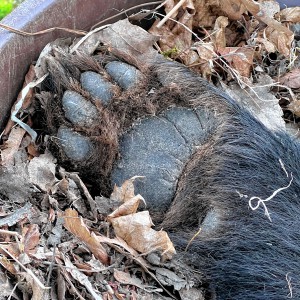Smith astronomer presents rare images of stars at national conference
| Published: 07-26-2017 3:31 PM |
NORTHAMPTON — When Smith College astronomy professor James Lowenthal got images back from the Hubble Space Telescope this year, his initial response was simple: “Wow!”
What he was looking at were the brightest infrared galaxies in the universe — close-up views of rare, ultrabright collections of stars from the early universe that are furiously producing even more stars. Those views, Lowenthal told the Gazette at his office on Tuesday, may someday help answer a fundamental question about the history of the cosmos: “how did galaxies form and evolve?”
The images Lowenthal was observing made use of a well-known effect called “gravitational lensing.” Essentially, the light from those 22 distant galaxies passes through the gravitational field of a closer massive object, which acts as a kind of cosmic magnifying glass for researchers on Earth.
That foregrounded, natural “lens” allows astronomers to see otherwise impossible-to-see pictures of the distant universe. Light traveling from those galaxies takes billions of years to reach Earth, so researchers are quite literally looking into the past at galaxies from as long as 12 billion years ago — about 90 percent of the way back to the Big Bang, according to Lowenthal.
Lowenthal presented those images at the American Astronomical Society meeting in Austin, Texas, last month.
“The reaction has been in our scientific community, ‘This is so, so cool,’” Lowenthal said of the response from his colleagues.
But before Lowenthal could take that peek into the past with his fellow researchers — including Min Yun, Kevin Harrington, Patrick Kamieneski and Daniel Wang of the University of Massachusetts Amherst — they had to write a scientifically rigorous proposal laying out their case for getting highly sought- after time on the Hubble telescope.
“We convinced them it would be really cool,” Lowenthal said of the proposal. “And wow! It was really cool.”
Article continues after...
Yesterday's Most Read Articles
 South Hadley man fatally shot in attempted robbery
South Hadley man fatally shot in attempted robbery
 Smith College exhibit explores Sylvia Plath’s botanical inspiration
Smith College exhibit explores Sylvia Plath’s botanical inspiration
 Holyoke man finds bear paw in his yard
Holyoke man finds bear paw in his yard
 Guest columnist Bill Dwight: How to make sense of Northampton’s school budget dilemma
Guest columnist Bill Dwight: How to make sense of Northampton’s school budget dilemma
 South Hadley’s Lauren Marjanski signs National Letter of Intent to play soccer at Siena College
South Hadley’s Lauren Marjanski signs National Letter of Intent to play soccer at Siena College
 Deerfield residents petitioning to fix ‘dangerous’ intersection
Deerfield residents petitioning to fix ‘dangerous’ intersection
Lowenthal said Yun and others cleverly discovered the galaxies by using publicly available data from several telescopes, and used the Large Millimeter Telescope — a joint project between UMass and Mexico’s National Institute of Astrophysics, Optics and Electronics — to confirm their distances from Earth.
It was thanks to that work narrowing down a list of distant galaxies that the team knew where to look when they got time on the Hubble telescope.
The distant galaxies in the Hubble images are producing 5,000 to 10,000 times more stars than the Milky Way, but are using the same amount of gas contained in the Milky Way. That fact leaves astronomers to puzzle over what exactly is fueling that star birth.
Possible explanations for the rapid creation of stars could be the collision of massive galaxies, a flood of gas or something entirely different. At issue is the very nature of galaxy formation and evolution.
Those are lingering questions that Lowenthal hopes to answer, but first the images from the Hubble telescope must be decoded.
While gravitational lensing makes those distant galaxies more visible in high detail, it also bends their light, leaving warped images with streaks, circles and arcs that can leave researchers unclear about what exactly they’re looking at. The task now is to unscramble those pictures.
To explain the warping of the images, Lowenthal used the analogy of looking at candlelight through a wine glass. The light will appear in different spots, or even stretch across the bottom of the glass in a circle, depending on how the glass is held.
Because the images they’ve received are warped, researchers must now work backwards to reconstruct what those galaxies actually looked like before passing through the lens. Knowing the distance of those galaxies, Lowenthal and others must figure out other variables like the gravitational pull of the lens to model what the original image looked like, or to even figure out what the background and foreground are.
“From Hubble, we got only monochromatic, black and white images. It’s only one wavelength,” Lowenthal said, noting that he’s hoping to get images from Hubble in the future that will show colors like red and blue. “If we did have that information, it would tremendously, instantly help us separate foreground from background, because the foreground and background are almost always different colors.”
Lowenthal and his colleagues failed to get approval to use the Hubble telescope during the latest cycle of proposals, but he said he hopes they’ll soon have access again, and they hope to gain further insight into the nature of those early galaxies.
While he waits for more data, however, the images Lowenthal already has have nevertheless changed his perception of the cosmos in at least some way. As a scientist who normally studies distant galaxies without much emphasis on gravitational lensing, the new images have made him rethink the galaxies he has been looking at for so many years.
“I have not been thinking, ‘Most of those galaxies are probably gravitationally lensed, at least a little bit,” Lowenthal said. “And now I’m thinking, ‘Everything is lensed!’”
“It’s definitely startling to have a big shift like that,” he said, though the smile on his face and wonder in his eyes seemed to indicate he was far more excited and curious for the work ahead than startled.

 Amherst regional district towns seek middle ground on school increase
Amherst regional district towns seek middle ground on school increase Leverett Town Meeting voters will decide cease-fire call, budgets, town elections
Leverett Town Meeting voters will decide cease-fire call, budgets, town elections  A Look Back: April 22
A Look Back: April 22 Regional farming alliance strengthens educational, networking opportunities for apprentices
Regional farming alliance strengthens educational, networking opportunities for apprentices
